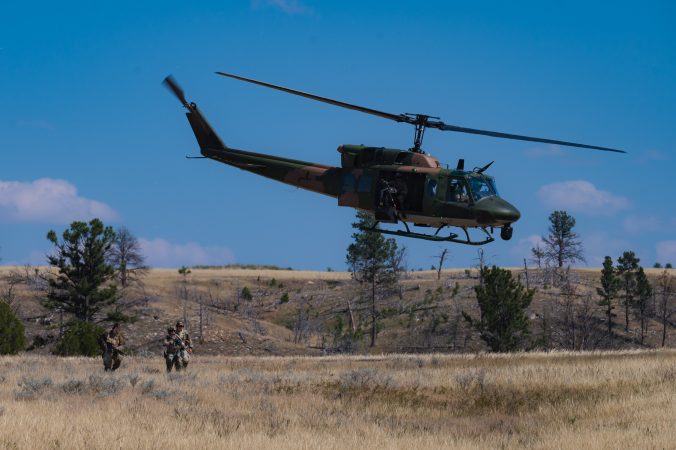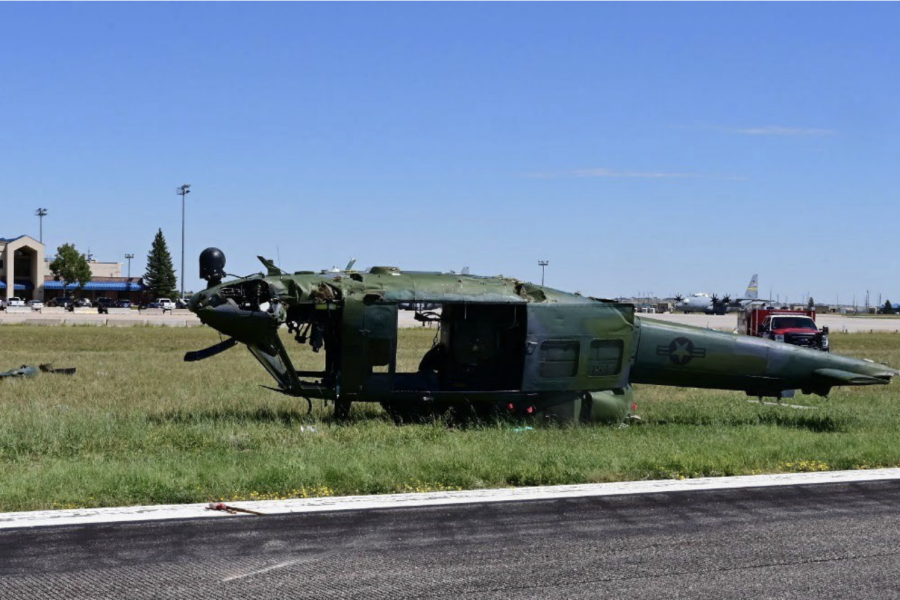The Air Force blamed the loss of a $5 million UH-1N helicopter on a civilian flight instructor and the Air Force pilot whose actions precipitated the August 2023 crash at Cheyenne Regional Airport, Wyo., according to a new Accident Investigation Board report.
The pilot, an experienced member of the 37th Helicopter Squadron at F.E. Warren Air Force Base, Wyo., with 1,500 flying hours—almost all in the Huey—was practicing an emergency landing procedure following a three-month break from flying for medical reasons at the time of the crash. The civilian instructor had 4,000 hours of experience.
Officials faulted the instructor pilot for failing to properly assess the risk and clearly order recovery steps, determining the instructor was overconfident in the pilot, fixated on specific cues, and task saturated at the time. The investigation also faulted the pilot for not having control of the helicopter and failing to perform a power recovery as instructed. Also on the flight was a current and qualified flight engineer.
After taking off from F.E. Warren, the crew performed a series of maneuvers without incident and then made the short flight to Cheyenne Regional Airport to finish the sortie by executing a 180-degree autorotation landing. This emergency procedure is used to land safely in the event of an engine failure, and requires the pilot to make a 180-degree turn, then descend, using the resulting air flow to keep the helicopter’s rotors moving. To practice the maneuver, crews put the engine into idle.
When the pilot executed the turn, however, it was with “excessive right bank, excessive nose low attitude, and uncoordinated flight (being out of trim),” the report stated.
Instead of descending at no more than 3,000-feet per minute, as called for, the helicopter descended rapidly, averaging 4,185 feet per minute; at one point, it was falling at 5,200 feet per minute. Even so, the instructor “relied on an overconfident assessment of [the pilot’s] ability to fix the attitude despite the rapidly decreasing timeframe,” investigators wrote.
While the instructor told the pilot to “watch your nose down”—and the pilot told investigators he brought the nose up—flight recorder data indicated he did not. The instructor did not realize the extent of the risk until, at only about 200 feet, calling for the pilot to “go around.”
It was too late. With the engine still in idle, the aircraft could not generate power, and continued to sink; the instructor tried to execute a flare, but the bank, lack of power, rotor speed, and forward airspeed left the aircraft unrecoverable.
The last-ditch effort to flare caused the helicopter’s tail to hit the ground first, and the aircraft bounced back and forth between its tail boom and its skids until both broke off. Freed of the tail boom, the helicopter spun and rolled, its rotor pounded the ground and broke off, and the main fuselage spun several more times before coming to rest upside down.
Miraculously, the military crew members escaped with minor injuries (so did the civilian instructor, but that individual’s medical records were not released to investigators.)
Investigators said the instructor “was ultimately responsible for the [aircraft] and the mission” and determined the instructor failed in not explicitly calling for a power recovery. But they also faulted the pilot for poor flight control and causing the excessive sink rate in the first place, and cited the entire crew for failing to properly execute a power recovery once the instructor called for a “go around.”
The aircraft was a total loss.
The Air Force has flown the UH-1N since the Vietnam War, but plans to phase out the aging choppers in favor of the new MH-139 Grey Wolf. F.E. Warren has yet to receive its first of the new aircraft.

